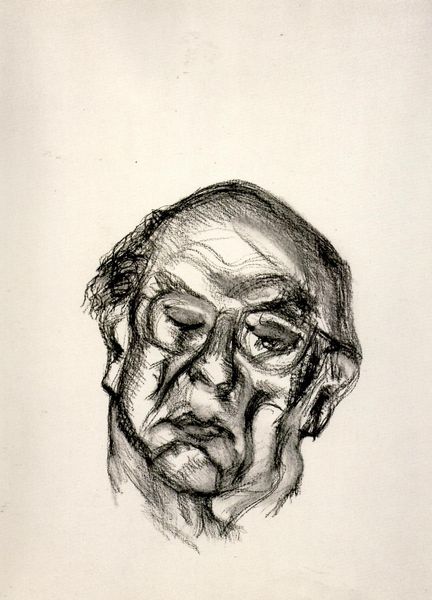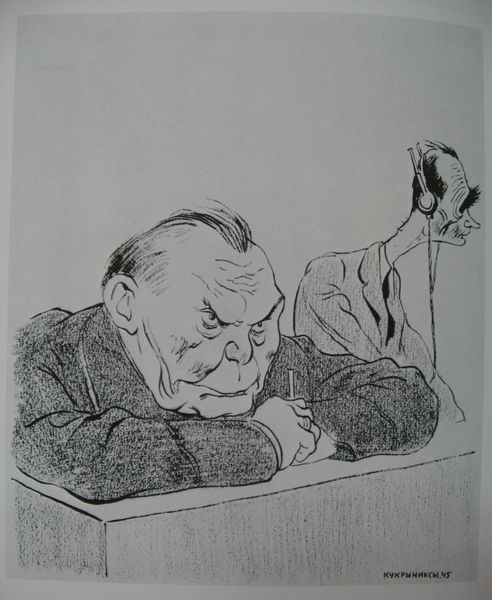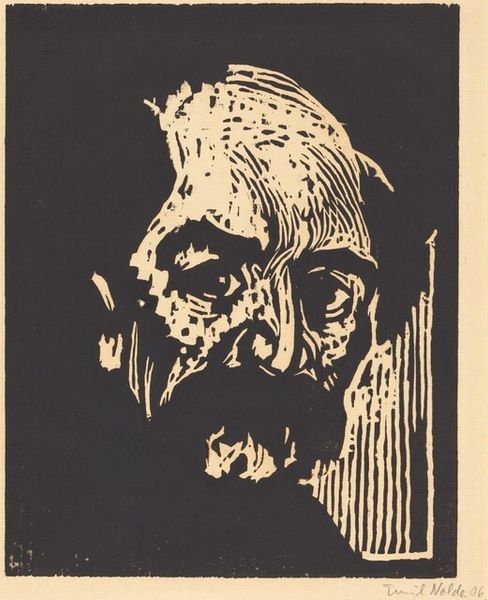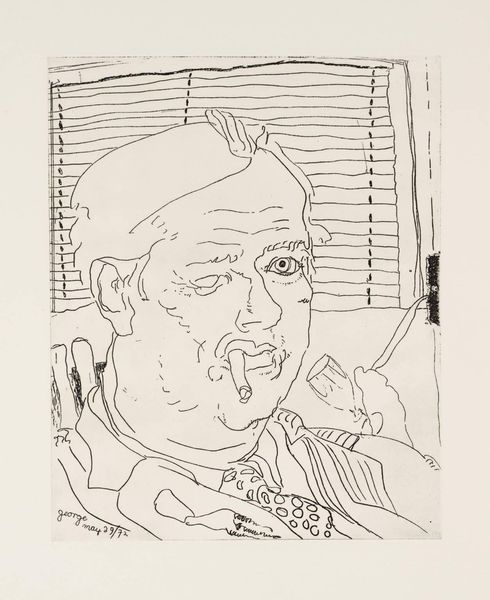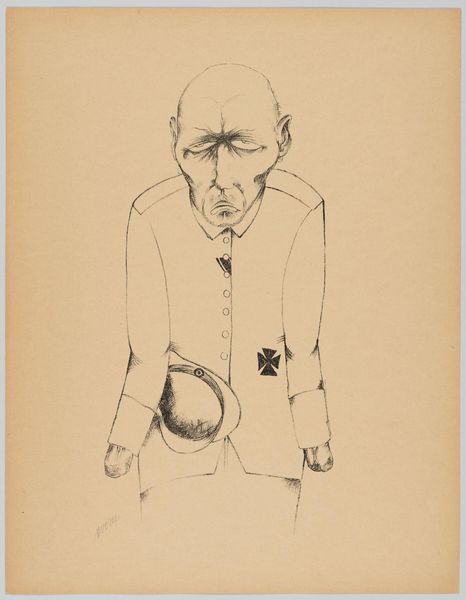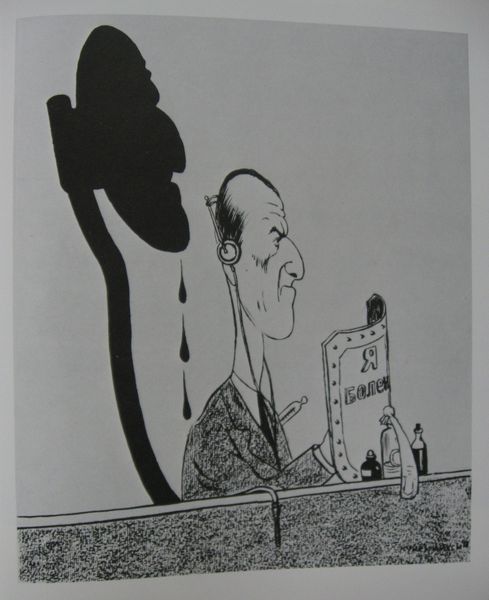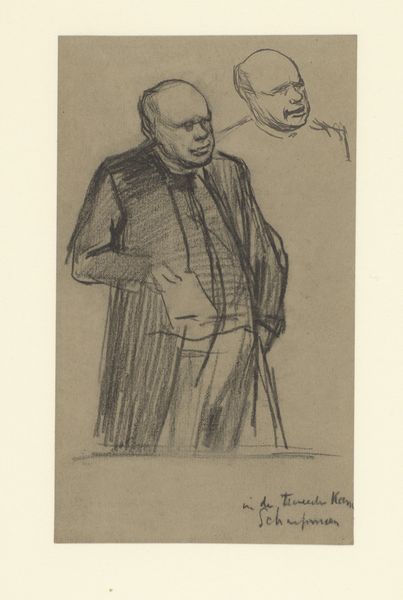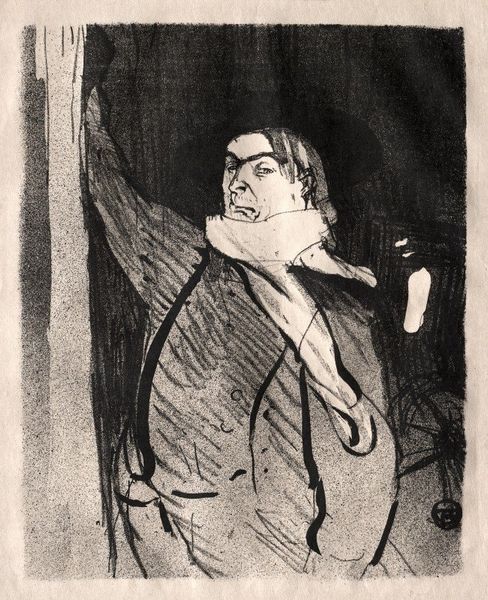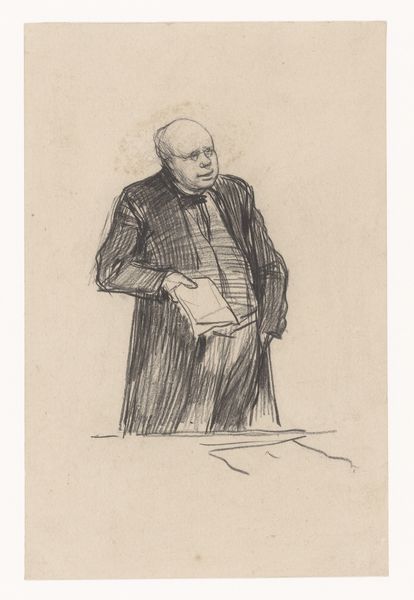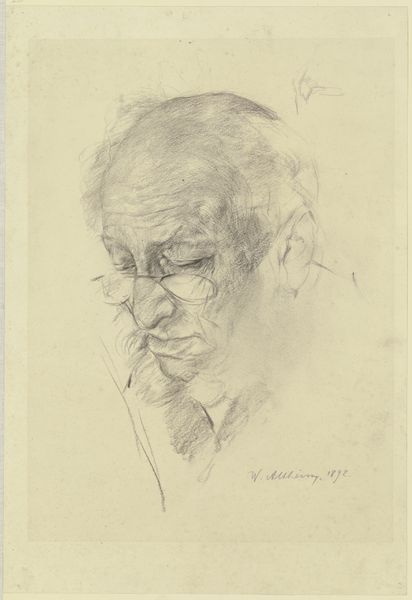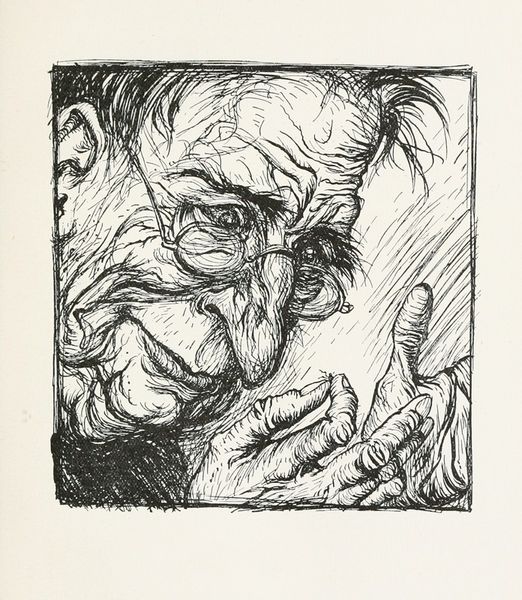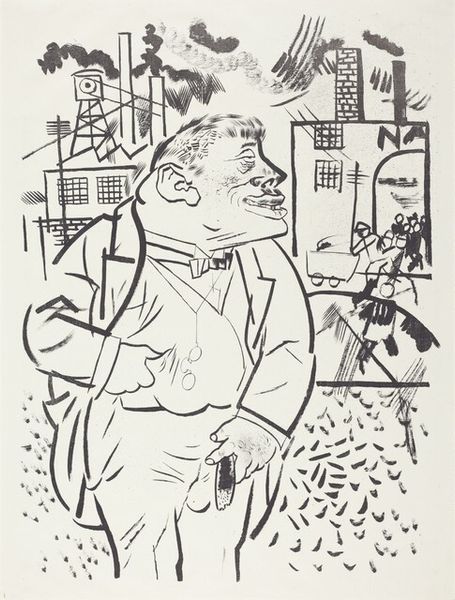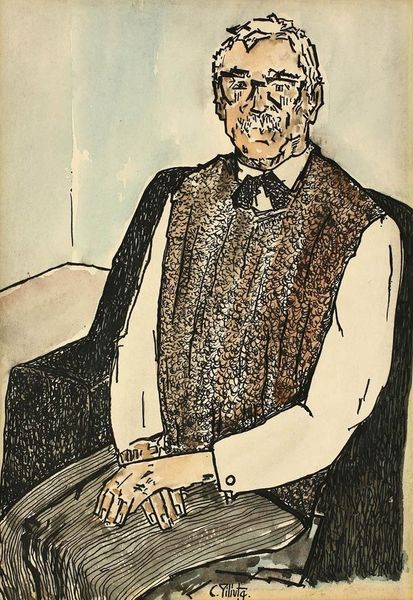
photography, gelatin-silver-print
#
portrait
#
self-portrait
#
sculpture
#
photography
#
gelatin-silver-print
#
modernism
#
statue
Dimensions: overall: 23.5 x 20.4 cm (9 1/4 x 8 1/16 in.)
Copyright: National Gallery of Art: CC0 1.0
Curator: Bill Brandt's gelatin-silver print from 1965 offers an intriguing image – it's a self-portrait of Giorgio de Chirico. Editor: It’s striking, this composition. The colossal scale of de Chirico's figure contrasts with the diminutive reflection in the mirror; the texture in the tweed of his jacket against the stark smoothness of his face and the stark geometric precision of the mirror’s frame. Curator: Brandt’s process here seems vital; consider the material quality of that silver gelatin. The way he’s manipulating the medium, it’s transforming de Chirico into something almost sculptural. He used a wide-angle lens, exaggerating proportions. Editor: That distortion shapes how we see the subject, definitely. Note how the face looms forward, seemingly cut off, almost monstrous. Yet, the smaller reflection presents a thoughtful, even wary gaze, rendered exquisitely in black and white. Is it supposed to present dueling notions of reality, existence even? Curator: That potential for stark binary is amplified by Brandt’s methods and materials. Think of photography in the mid-20th century – gelatin-silver enabled crispness, stark tonality. Editor: Exactly. And what effect do you think that would have? It evokes isolation, don't you think? And perhaps a little foreboding. It gives us texture and shape and tonal qualities. Curator: Well, in those materials we may glimpse his working methods, too. Brandt captured the art world and the societal elites… There's an echo here between the individual and mass society of art at the time. De Chirico’s image here could represent the artist struggling against an onslaught of commodification of his self. Editor: A strong reading of that photograph's placement within history, the effect it would ultimately produce for the artistic and societal implications. From my viewpoint, I believe Brandt makes a compelling play between the monumental and the miniature, darkness and light, and what the mirror reflection can achieve. Curator: It highlights the complex layering inherent to photography, in all truth. Thanks.
Comments
No comments
Be the first to comment and join the conversation on the ultimate creative platform.
